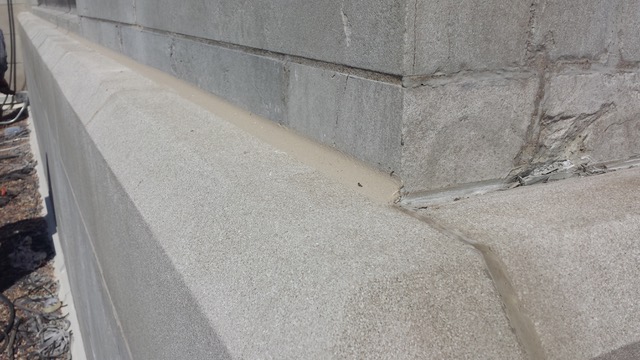Causes and solutions for receding mortar

Worn or damaged joints are a problem for any masonry structure, from the modern EIFS façade to the brick walls of a historic townhouse. If left unrepaired, cracked mortar will lead to more severe damage that ends up costing more to repair down the line.
The mechanics of mortar deterioration
During spring, the walls of your structure are subjected to wind-blown rain, hail, and other elemental attacks. During summer they endure extreme heat. In the winter, mortar contracts with cold temperatures, and freezing moisture within the masonry causes stress and damage.
That constant stress on the mortar of your building causes deterioration over time. As the mortar weakens, it will eventually fracture. Fractures and cracking will in turn allow more water to infiltrate the masonry. Masonry begins to spall and crumble and as these exposures increase so does the rate of decay.
As the condition of the mortar and masonry deteriorates, more water can get in and cause even more damage. It’s a cycle that ultimately puts structural integrity at risk—not to mention aesthetics and functionality.
How is mortar repaired?
The only real repair method is what we call repointing or tuck-pointing. The process of tuck-pointing is the removal or cutting out of defective mortar joints and replacing them with new mortar to match the existing color and texture.
Tuck-pointing itself is not that complicated of a process, but matching 90 year old mortar with a new blend is an art form. We also have ways of sending samples of mortar from historic buildings to have them forensically analyzed so that we can create a custom blend that will include a match of the aggregate size, type of binder, and ratio of Portland cement to sand. This allows us to formulate a true match of any mortar.
When should you repair mortar?
Masonry joints don’t wear evenly. Different parts of a façade are more exposed to the elements, and those early exposures allow water to get to the rest of the structure. Experience has shown us that continually repairing mortar is the best way to extend the life of your masonry. Tuck-pointing and other repairs allow us to keep damage from getting extensive.
While we recommend tuck-pointing mortar as it recedes, we also recommend a complete veneer evaluation every ten to fifteen years to ensure structural integrity and to make sure the building owner has a good maintenance plan in place.
Choose JK Industries for your mortar rehab needs
We perform a wide variety of masonry services, from tuck-pointing to stone restoration and veneer stabilization. From masonry maintenance at retail locations to historic building rehabilitation, we can help ensure the longevity and beauty of your building.
